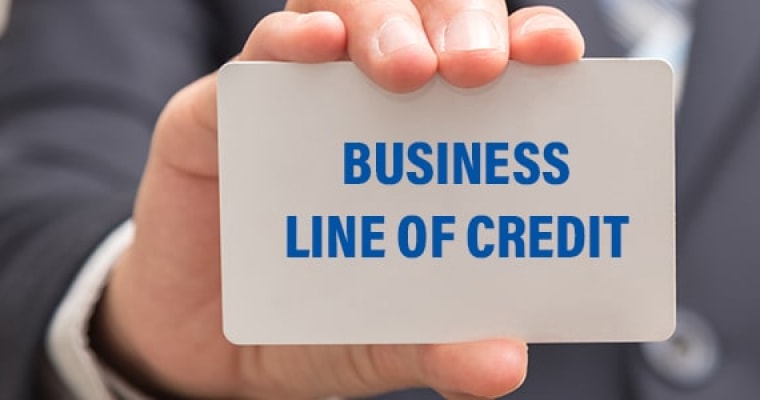Introduction
In the realm of small business finance, two common funding solutions often come up: business loans and lines of credit. While both are viable options to fund operations, growth, or manage cash flow, they serve different purposes and come with distinct features. Choosing between them requires an understanding of their structure, repayment terms, flexibility, and impact on a business’s financial health.
This article breaks down the differences between business loans and lines of credit, analyzes their pros and cons, and guides you in determining which might best suit your business needs.
Key Takeaways
- Business loans are best for large, one-time investments with predictable repayment schedules.
- Lines of credit provide flexible, revolving funds suitable for short-term and operational needs.
- Consider interest costs, repayment structure, and flexibility before choosing.
- Having both a loan and a LOC can offer the best of both worlds for growing businesses.
- Use these tools responsibly to strengthen your business’s financial foundation and credit profile.
What Is a Business Loan?
A business loan is a lump sum of money provided by a lender that must be repaid over a set period with interest. Typically, business loans are used for large, one-time expenses such as equipment purchases, real estate acquisition, or significant expansion projects.
Types of Business Loans:
- Term Loans: Fixed amount, fixed repayment period.
- SBA Loans: Backed by the Small Business Administration.
- Equipment Loans: For purchasing machinery or tools.
- Invoice Financing: Advances against outstanding invoices.
Key Characteristics:
- Fixed repayment schedule
- Predictable interest rates
- Often requires collateral or strong credit history
- Suitable for long-term investments
What Is a Business Line of Credit?
A business line of credit (LOC) offers flexible access to a preset amount of funds. Unlike a loan, you only pay interest on the amount you actually use, not the full credit line. LOCs are ideal for managing cash flow, handling unexpected expenses, or funding recurring short-term needs.
Types of Business Lines of Credit:
- Secured Line of Credit: Backed by collateral (e.g., inventory or accounts receivable)
- Unsecured Line of Credit: No collateral required but usually demands higher credit scores
Key Characteristics:
- Revolving credit (like a credit card)
- Interest charged only on drawn funds
- High flexibility
- Renewed upon successful repayment
Key Differences Between Business Loans and Lines of Credit
| Feature | Business Loan | Line of Credit |
|---|---|---|
| Fund Access | Lump sum | As-needed basis |
| Repayment | Fixed schedule | Flexible, only on used funds |
| Interest | On full amount | On amount used only |
| Use Case | One-time large purchases | Ongoing operational needs |
| Flexibility | Low | High |
| Renewability | Not usually renewable | Often renewable |
| Approval Time | May take longer | Typically faster |
Pros and Cons of Business Loans
Pros:
- Predictable payments help with budgeting
- Can secure larger amounts of funding
- Lower interest rates for qualified borrowers
Cons:
- Less flexible
- Interest applies to the full amount
- Strict qualification criteria
Pros and Cons of Business Lines of Credit
Pros:
- Pay interest only on what you use
- Easy to access funds as needed
- Excellent for covering payroll gaps or emergencies
Cons:
- May have higher interest rates
- Potential for overuse or mismanagement
- Lower funding limits compared to loans
When to Choose a Business Loan
Opt for a business loan when you:
- Need capital for a major, one-time investment
- Are purchasing fixed assets like property or machinery
- Want predictable monthly payments
- Have a solid repayment plan and strong financials
When to Choose a Business Line of Credit
Choose a line of credit when you:
- Need short-term cash flow support
- Have seasonal business fluctuations
- Want quick access to cash for emergencies
- Prefer financial flexibility
Qualification and Application Process
Both funding types require business and personal financial information. However, the processes differ:
For Loans:
- Comprehensive application
- Financial projections, tax returns
- Collateral (in many cases)
For LOCs:
- Simpler application
- Often faster approval
- Good credit history required, especially for unsecured LOCs
Costs and Fees
Business Loans:
- Origination fees
- Prepayment penalties
- Interest on full principal
Lines of Credit:
- Maintenance fees
- Withdrawal fees
- Interest on used amount only
Impact on Business Credit
Both loans and LOCs affect your business credit profile. Responsible usage of either helps build creditworthiness. However, misuse, especially over-borrowing on an LOC, can harm your credit.
What Type of Business Loan Is Right for Your Industry?
Description:
This article can break down how different industries—retail, construction, healthcare, tech startups—have varying financial needs and which loan types fit best. Include comparisons between SBA loans, invoice financing, merchant cash advances, and equipment loans based on industry trends and cash flow cycles.
Can a Business Loan Actually Help You Grow Faster?
Description:
Explore how strategic use of borrowed capital can drive faster expansion, hire talent, invest in marketing, and boost revenue. Use case studies of small-to-medium businesses that scaled quickly due to loans. Discuss ROI on borrowed capital and financial planning.
How Do You Qualify for a Business Loan with Bad Credit?
Description:
Delve into practical tips and strategies for business owners with less-than-perfect credit. Discuss how to improve creditworthiness, alternative financing options, the role of collateral, and how lenders evaluate risk beyond credit scores.
Is an Online Business Loan Safe and Worth It in 2025?
Description:
Analyze the rise of digital lenders, their benefits (speed, fewer documents), potential risks (scams, high APRs), and how to vet online lenders. Compare top platforms with traditional banks and include regulatory updates for 2025.
What Are the Most Common Mistakes When Applying for a Business Loan?
Description:
Provide a comprehensive guide to pitfalls like overborrowing, poor documentation, misunderstanding terms, and choosing the wrong loan type. Offer actionable advice and loan readiness checklists.
How Do SBA Loans Compare to Traditional Business Loans?
Description:
An in-depth comparison of SBA loans (7(a), 504, microloans) with conventional loans. Discuss qualification processes, interest rates, repayment periods, benefits of government guarantees, and limitations.
Should You Use Personal Credit to Fund Your Business?
Description:
Analyze the pros and cons of using personal loans, credit cards, or personal guarantees for business needs. Discuss risks, credit implications, and when it might make sense for startups or sole proprietors.
What Are the Tax Implications of Taking a Business Loan?
Description:
Educate readers on interest deductibility, capital expenses, depreciation, and how business loans impact taxable income. Include expert insights or simplified case examples to clarify complex tax scenarios.
How Can Women Entrepreneurs Access Better Business Loan Options?
Description:
Focus on funding programs, grants, and loan structures specifically supporting women-owned businesses. Include barriers women face in accessing capital and how government and private institutions are helping bridge the gap.
What’s the Best Way to Use a Business Loan Without Going into Debt?
Description:
Offer a guide to responsible borrowing—budgeting, forecasting ROI, tracking loan usage, and repaying efficiently. Emphasize financial discipline, tools, and real-world business budgeting examples.
What Documents Do You Need to Apply for a Business Loan Successfully?
Description:
Walk readers through a complete checklist of required documents—financial statements, business plans, tax returns, cash flow forecasts, and personal financials. Include explanations of why each is important and how to prepare them properly to increase loan approval chances.
How Can a Business Loan Improve Your Working Capital?

Description:
Explain the role of working capital in daily operations. Discuss how a well-structured loan can help manage shortfalls, pay vendors, meet payroll, and seize short-term opportunities. Include financial strategies for maintaining healthy liquidity ratios.
What Are the Hidden Fees in Business Loans You Must Watch For?
Description:
Break down lesser-known costs such as origination fees, prepayment penalties, annual maintenance charges, and late fees. Offer tips on comparing loan offers beyond interest rates, using APR and total cost of borrowing as a guide.
Is a Business Loan Better Than Bootstrapping Your Startup?
Description:
Compare the pros and cons of self-funding (bootstrapping) vs. borrowing capital. Address how each method affects ownership, scalability, and risk. Include case studies of startups that succeeded with both approaches.
How Do Business Loans Affect Your Cash Flow and Profitability?
Description:
Dive into the financial impact of loans—how repayments influence monthly cash flow and net profits. Provide sample financial statements and scenarios illustrating the right balance between debt and business growth.
What Are the Best Government-Backed Loan Schemes for Small Businesses in 2025?
Description:
Provide a detailed overview of current government initiatives, like SBA loans (USA), CGTMSE (India), or Start Up Loans (UK). Include eligibility, benefits, and application steps. Ideal for entrepreneurs seeking affordable funding.
How Do Interest Rates on Business Loans Vary by Loan Type and Credit Score?
Description:
Educate readers on how interest rates are calculated based on credit profiles, risk tiers, collateral, and loan purpose. Include average interest rate ranges by loan type and tips to qualify for lower rates.
How to Refinance a Business Loan and Save Money in 2025?
Description:
Guide businesses on when and how to refinance existing debt to reduce interest or extend repayment terms. Discuss benefits, risks, and lender criteria. Add a step-by-step refinancing strategy with sample calculations.
Can You Get a Business Loan Without Collateral in 2025?
Description:
Explore unsecured business loan options and what it takes to qualify—strong cash flow, high credit score, or business guarantees. Compare risks and costs with secured loans, and list lenders offering no-collateral options.
How to Use a Business Loan to Boost E-Commerce Growth
Description:
Target e-commerce entrepreneurs by showing how to use loans for digital marketing, inventory purchases, platform upgrades, and logistics. Include ROI-based loan planning and tools to measure campaign success after funding.
How Can You Use a Business Loan to Expand Into New Markets?
Description:
Focus on how business loans can be strategically used to enter new geographic or demographic markets. Include market research, hiring local teams, setting up infrastructure, and local marketing. Discuss how to evaluate market readiness and measure post-expansion ROI. Include real-life examples of successful market expansion funded by loans.
What Are the Different Repayment Structures for Business Loans?
Description:
Break down the various repayment plans: fixed monthly payments, balloon payments, interest-only loans, and revenue-based repayments. Analyze how each repayment structure affects cash flow, budgeting, and long-term debt strategy. Include calculators or charts to show how payments differ over time.
Should You Take a Business Loan to Survive a Financial Crisis?
Description:
Explore scenarios where a business loan can help during recessions, pandemics, or industry slowdowns. Analyze the risks and benefits of using borrowed funds to stay afloat. Include tips for evaluating financial sustainability, negotiating better terms, and alternatives like restructuring existing loans.
How Do You Choose the Right Lender for Your Business Loan?
Description:
Compare traditional banks, credit unions, online lenders, fintech platforms, and peer-to-peer lending. Explain how to evaluate lenders based on interest rates, transparency, support, speed of disbursement, and customer service. Provide a lender comparison chart and due diligence checklist.
What Role Does a Business Plan Play in Loan Approval?
Description:
Dive into why a strong business plan is critical in securing financing. Cover essential sections—executive summary, market analysis, financial projections, use of funds. Offer tips on crafting a compelling plan that appeals to lenders and investors. Include downloadable templates or examples.
Can a Business Loan Help Improve Your Business Credit Score?
Description:
Explain how responsible loan usage builds a credit profile, improves borrowing limits, and lowers future interest rates. Offer a roadmap for using loans strategically to build credibility—on-time payments, balanced utilization, and keeping debt within healthy levels.
What Are the Risks of Taking a Business Loan You Can’t Afford?

Description:
Highlight the dangers of overleveraging—missed payments, asset seizures, damaged credit, and business bankruptcy. Guide readers on calculating safe debt-to-income ratios and how to forecast repayment capabilities before applying. Include cautionary tales and financial planning tools.
How Can Seasonal Businesses Benefit from Short-Term Loans?
Description:
Tailor this article to industries like tourism, retail, and agriculture. Discuss short-term business loans, working capital loans, or lines of credit designed to cover off-season costs or inventory stocking before peak periods. Include industry-specific use cases and loan timing tips.
What Are the Best Business Loan Options for Minority-Owned Enterprises?
Description:
Highlight programs, grants, and lenders that focus on underserved entrepreneurs—including racial minorities, tribal groups, and immigrants. Include public and private support programs, tips for navigating financial discrimination, and interviews with successful minority entrepreneurs.
Is Crowdfunding a Better Option Than a Business Loan?
Description:
Compare traditional business loans with crowdfunding platforms (Kickstarter, Indiegogo, equity crowdfunding). Analyze pros (no repayment, community support) and cons (intensive marketing, no guaranteed funding). Guide on when to choose loans vs. raising money through online communities.
How Do Business Loans Support Digital Transformation in 2025?
Description:
Explore how businesses can use loans to invest in digital tools—cloud infrastructure, automation software, AI-driven analytics, cybersecurity, and online platforms. Discuss the ROI of digital upgrades and how lenders are offering tech-focused financing products. Include real business transformation stories enabled by financing.
What Is the True Cost of a Business Loan Over Time?
Description:
Teach readers how to calculate and understand the total cost of borrowing, including interest, fees, penalties, and opportunity cost. Use case studies and side-by-side comparisons of short- and long-term loans. Introduce tools like APR, amortization schedules, and cost-benefit analysis.
How Can Small Businesses Compete with Big Brands Using Loan-Funded Strategies?
Description:
Show how business loans can help small businesses level the playing field through digital marketing, talent acquisition, product development, or supply chain upgrades. Provide tactical growth blueprints funded by smart borrowing decisions.
How to Build a Strong Loan Application Package for Fast Approval
Description:
Offer a step-by-step guide to crafting a winning loan application, including credit reports, financial statements, business plans, resumes, references, and projections. Provide checklists, templates, and common errors to avoid during submission.
What Are the Ethical Considerations When Taking Business Loans?
Description:
Dive into the ethical side of borrowing—transparency with stakeholders, proper allocation of funds, repayment integrity, and sustainable debt management. Discuss reputational risks, ethical finance practices, and case examples of responsible vs. irresponsible borrowing.
What Role Do Loan Brokers Play in Business Financing?
Description:
Unpack the function of business loan brokers: how they operate, benefits of using them, red flags, and how to find reputable brokers. Include comparisons of DIY loan shopping vs. using an intermediary and explain how brokers get paid.
How Can Franchise Owners Use Loans to Scale Operations?
Description:
Target franchisees with specific advice on using loans for franchise fees, new locations, equipment, staff training, and branding. Cover franchise loan options like SBA 7(a), and how franchise networks can assist in securing financing.
What Are the Best Financing Options for Home-Based Businesses?
Description:
Cater to solopreneurs and microbusiness owners by comparing microloans, peer-to-peer loans, credit cards, and personal loans. Offer tips on separating personal and business finances and maintaining credibility as a home-run operation.
How Do You Compare Business Loan Offers from Multiple Lenders?
Description:
Teach readers how to assess loan offers based on APR, term length, lender reputation, flexibility, collateral terms, and covenants. Include a downloadable comparison template or calculator tool.
Can a Business Loan Help You Prepare for an IPO or Acquisition?
Description:
Explain how strategic borrowing can fund key steps toward a public offering or acquisition—like scaling operations, cleaning up finances, boosting valuation, or hiring Consultants. Include insights from CFOs and financial advisors on balancing debt with growth goals.
Also read : How Much Home Loan Can You Really Afford?
Conclusion
Understanding the nuances between a business loan and a line of credit is crucial for making smart financial decisions. While business loans provide long-term stability and are ideal for major investments, lines of credit offer the agility to handle daily operations, seasonal dips, or unexpected needs.
By evaluating your cash flow, financial goals, and repayment capacity, you can determine which option (or combination of both) aligns best with your business strategy. Both tools, when used wisely, can be powerful catalysts for growth.
FAQs
Can I use a line of credit to fund a large equipment purchase?
A: While technically possible, a business loan is usually better suited due to fixed terms and lower interest rates for large one-time purchases.
Do lines of credit require collateral?
A: Secured LOCs do, but there are unsecured options available for businesses with strong credit.
Which is better for startups—loan or line of credit?
A: It depends on your needs. LOCs offer flexibility, but loans might provide the larger capital startups often require.
Are the interest rates fixed in both options?
A: Business loans often have fixed rates, while lines of credit usually have variable rates.
Can I have both a business loan and a line of credit at the same time?
A: Yes. Many businesses use a loan for big investments and a LOC for day-to-day working capital.
How fast can I get funds from a business line of credit?
A: LOCs are generally faster—some lenders provide access within 24–48 hours after approval.
What happens if I don’t use my line of credit?
A: You won’t pay interest, but some lenders may charge maintenance or inactivity fees.


